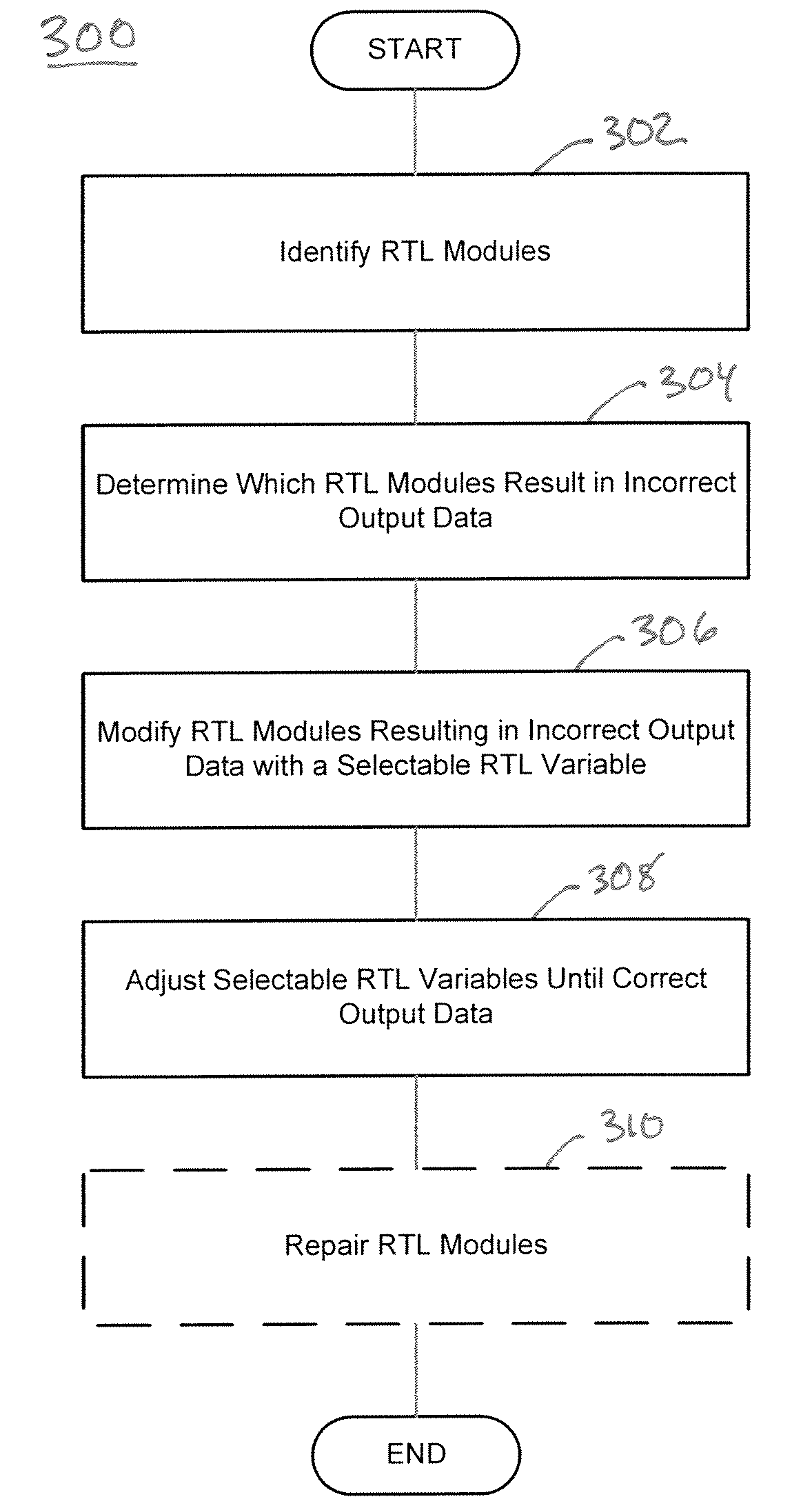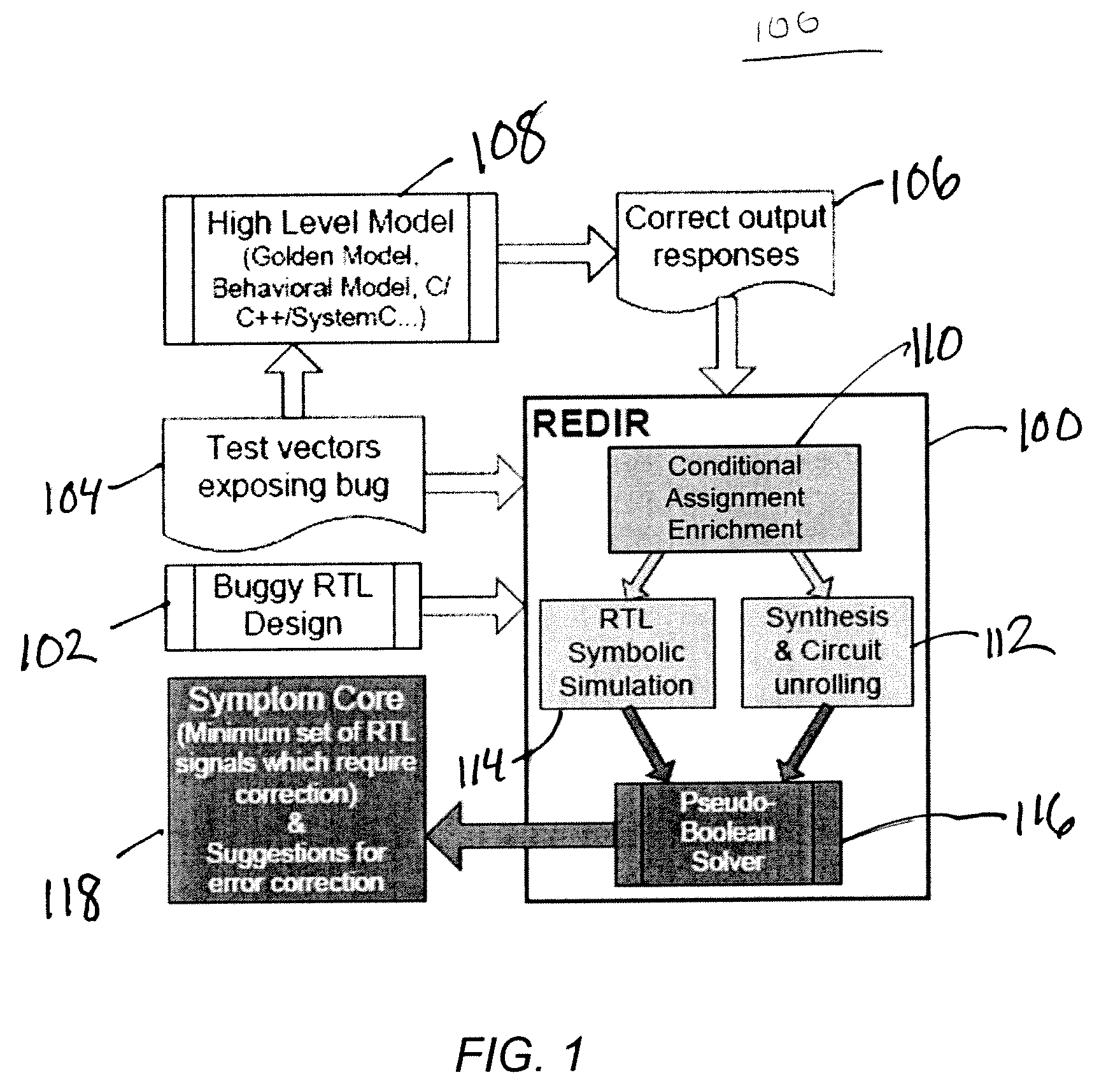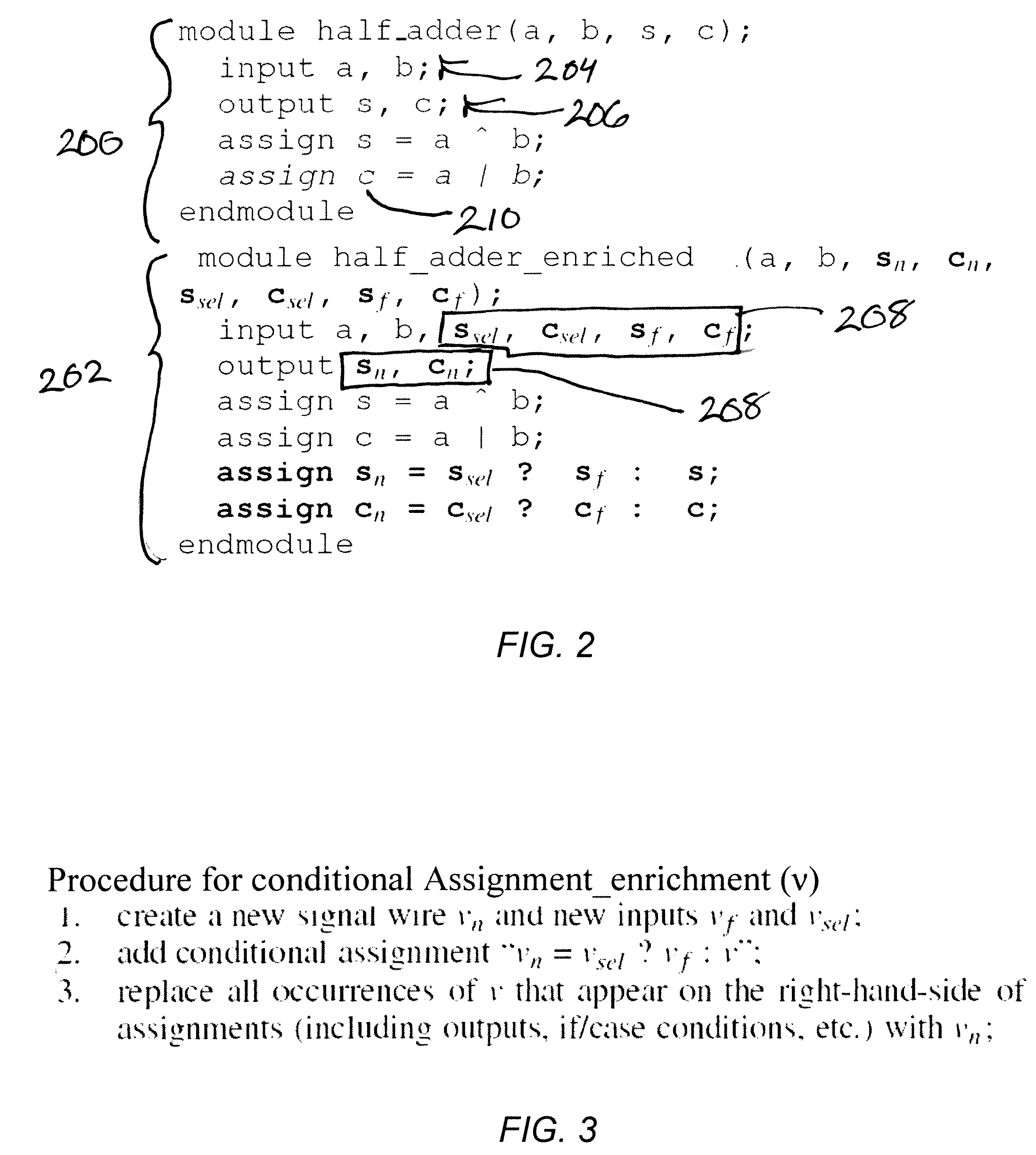Automatic error diagnosis and correction for RTL designs
a technology of error diagnosis and error correction, applied in the field of integrated circuit design, can solve the problems of ineffective application of gate level diagnosis algorithms to rtl, rtl error diagnosis is rather different from that at the gate level, and the described techniques can diagnose significantly more bugs. , to achieve the effect of improving the overall verification quality, facilitating the rtl debugging process, and efficient and scalabl
- Summary
- Abstract
- Description
- Claims
- Application Information
AI Technical Summary
Benefits of technology
Problems solved by technology
Method used
Image
Examples
example 1
[0058]Assume that the circuit shown (RTL module) in FIG. 6 contains an error: signal g1 is erroneously assigned to expression “r1|r2” instead of “r1& r2”. Conditional assignments, highlighted in boldface, have been inserted into the circuit using the techniques described above. For simplicity reasons, the MUXes at the outputs of registers r1 and r2 are not included. The trace that exposes the error in two simulation cycles consists of the following values for inputs {I1, I2}: {0, 1}, {1, 1}. When the same trace is simulated by a high-level behavioral model, the correct output responses for {O1, O2} are generated: {0, 0}, {1, 0}. Besides these output responses, no addition information, such as values of internal signals and registers, is required. We annotate the symbols injected during the simulation by their cycle numbers using subscripts. The Boolean expressions for the primary outputs for the two cycles of simulation are:
O1n@1=O1sel?O1f@1:[I1@1|(g1sel?g1f@1:0)]
O2n@1=O2sel?O2f@1:[...
example 2
[0067]Using the same circuit as Example 1, the values returned by the PB solver for g1f@0 and g1f@1 are both 0. Since the inputs to g1 are {0, 0} and {0, 1} for the first two cycles, RTL error correction returns the following new logic expressions that can fix the error: g1=r1&r2, g1=r1, etc. Note that although the correct fix is returned, the fix is not unique. In general, longer traces containing various test vectors will identify the error with higher precision and suggest better fixes than short ones.
[0068]Fixing errors involving multi-bit variables is more difficult than fixing errors involving only one-bit variables because different bits in the variable may be generated differently. To solve this problem, the framework 100 may allow the user to insert a conditional assignment for each bit in the variable. Alternatively, the framework 100 can also be configured to consider only the least-significant bit when performing error correction. This is useful when the variable is cons...
PUM
 Login to View More
Login to View More Abstract
Description
Claims
Application Information
 Login to View More
Login to View More - R&D
- Intellectual Property
- Life Sciences
- Materials
- Tech Scout
- Unparalleled Data Quality
- Higher Quality Content
- 60% Fewer Hallucinations
Browse by: Latest US Patents, China's latest patents, Technical Efficacy Thesaurus, Application Domain, Technology Topic, Popular Technical Reports.
© 2025 PatSnap. All rights reserved.Legal|Privacy policy|Modern Slavery Act Transparency Statement|Sitemap|About US| Contact US: help@patsnap.com



